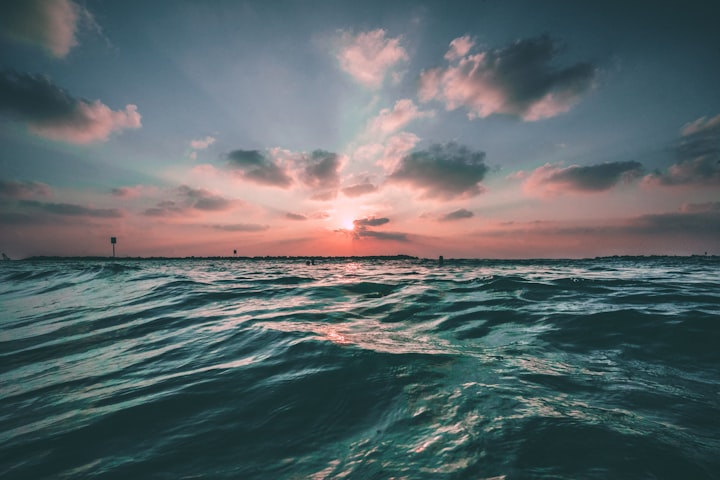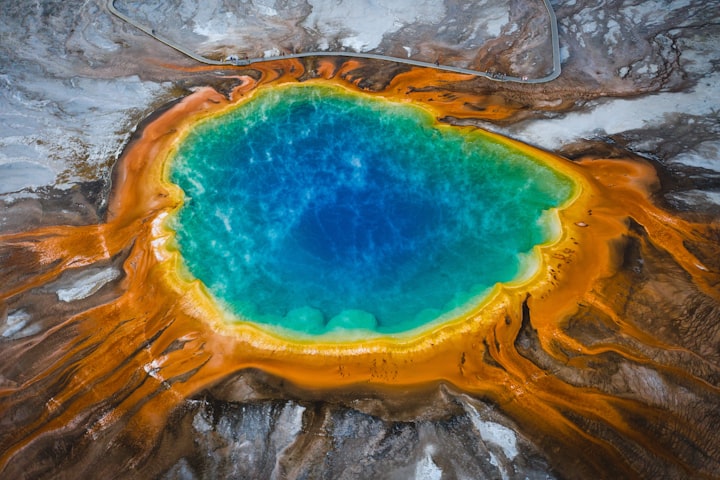Why Is The Ocean Salty - Unraveling the Science Behind It
Have you ever wondered why the ocean is salty?

The ocean covers over 70% of the Earth's surface and is essential to life on our planet. One of the distinctive characteristics of the ocean is its salinity - the high concentration of dissolved salts that give the water its distinct taste and buoyancy. But have you ever wondered why the ocean is salty? The answer is not as simple as you might think. The saltiness of the ocean is the result of a complex interplay between natural processes and human activities. In this article, we will explore the various factors that contribute to the ocean's salinity, from historical perspectives to modern scientific research, and examine the environmental and economic impacts of a salty ocean. We will also take a closer look at the Natural History Museum's contributions to our understanding of marine life and oceanography.
Have you ever wondered why the ocean is salty?
It's a common question that has fascinated people for centuries. The answer is a complex mix of natural and human factors, from the flow of rivers and the distribution of salt throughout the ocean to the impact of pollution and climate change. Understanding the sources and consequences of ocean salinity is essential to protecting marine life and ensuring the health and sustainability of our oceans. So let's dive in and explore the fascinating world of ocean salinity.
Historical Perspectives
The study of ocean salinity has a long and storied history that dates back to the ancient Greeks. Throughout history, scientists and explorers have sought to understand the complex interactions between the ocean and the environment. Early theories on ocean salinity centered around the idea that the ocean was salty because it was stagnant and had been evaporating for thousands of years. However, it wasn't until the 19th century that scientists began to develop more accurate methods for measuring salinity and exploring the impact of salinity on marine life. Today, the study of ocean salinity continues to be a crucial area of research, as scientists seek to understand how changes in salinity impact the ocean's delicate balance and the health of marine ecosystems.
Ocean Circulation
Ocean circulation is a crucial factor in the distribution of salt throughout the ocean, which has significant impacts on marine ecosystems. The ocean's currents and circulation patterns transport warm water from the tropics to the poles and cold water from the poles to the tropics, creating a global network of currents. As water moves through the ocean, it also carries dissolved salts. The salt concentration of ocean water can vary significantly depending on the location and the depth of the water. The movement of saltwater through the ocean not only influences the ocean's salinity but also has a significant impact on marine ecosystems, including the distribution of nutrients and the migration patterns of marine organisms.

Human Impact
Human activities have significant impacts on the ocean's salinity and its effects on marine ecosystems. Pollution from oil spills, agricultural runoff, and other sources can increase the salinity in certain areas and cause harmful algal blooms that can lead to oxygen depletion and death of marine life. Additionally, climate change is causing changes in precipitation patterns, leading to changes in freshwater runoff and ocean circulation. This, in turn, can alter the salinity of the ocean and impact marine life. Understanding and mitigating these human impacts are crucial in protecting the health and sustainability of our oceans.
Saltwater Lakes and Seas
Saltwater lakes and seas, like the Dead Sea, the Great Salt Lake, and the Red Sea, are some of the saltiest bodies of water on Earth. These water bodies are formed when water from rivers and other sources flows into a closed basin and then evaporates, leaving behind the salt and minerals that were dissolved in the water. The amount of salt in these lakes and seas is much higher than in the ocean due to the absence of a significant amount of water exchange with the ocean. The high salt concentration in these water bodies has also created unique ecosystems and geological formations, making them fascinating destinations for scientists and tourists alike.
Evaporation and Precipitation
Evaporation and precipitation are two critical processes that play a significant role in the ocean's salinity. As water evaporates from the ocean surface, it leaves behind its salt content, resulting in an increase in salinity. Similarly, when precipitation falls, it dilutes the ocean's salt content, leading to a decrease in salinity. Climate change can affect the patterns of both evaporation and precipitation, which can, in turn, impact the ocean's salinity. For example, as temperatures rise, evaporation rates can increase, leading to an increase in salinity. Additionally, changes in rainfall patterns can alter the amount of freshwater that enters the ocean, affecting its overall salt content.
Salinity and Sea Ice
The freezing and melting of sea ice play an important role in the ocean's salinity and the global climate system. When sea ice freezes, it releases salt into the water, making it more saline. Conversely, when sea ice melts, it dilutes the ocean's salt content. This process can have significant impacts on the global climate system, as changes in ocean salinity can affect ocean currents, which in turn can impact weather patterns. For example, if the melting of sea ice causes the ocean to become less saline, it could slow down the Atlantic Meridional Overturning Circulation (AMOC), which is responsible for transporting warm water from the tropics to the North Atlantic. This could have significant impacts on the climate of Europe and North America.

Economic Importance
The ocean and other saltwater bodies play a crucial role in several industries that are vital to global economies. Fishing, for instance, relies heavily on saltwater, with many communities around the world relying on it as a primary source of food and income. Additionally, the shipping industry uses the ocean to transport goods across the globe, while energy production involves the use of saltwater for cooling purposes in power plants. The economic importance of saltwater extends beyond these sectors, as it also contributes significantly to tourism, with many people traveling to coastal regions to enjoy the beach and water activities.
Cultural Significance
Saltwater has played a significant role in various cultures throughout history. In ancient times, it was a valuable commodity used for trade and preserving food. Salt was also used in religious rituals, and in some cultures, it was believed to have healing properties. In many coastal communities, saltwater has been a source of livelihood through fishing and aquaculture. Saltwater also plays a role in traditional cuisines, such as salt-cured meats and fish, and in the production of salt-based condiments like soy sauce and fish sauce. Additionally, saltwater is a popular recreational resource for activities like swimming, surfing, and boating, and is celebrated in art, literature, and music.
Natural Influences and Processes
The ocean's saltiness is also influenced by various natural processes, such as hydrothermal fluids from the seafloor, river runoff, and volcanic activity. The seafloor has hot springs and geysers that release fluids containing minerals and salts into the ocean, which can contribute to its overall salinity. Similarly, river runoff can also contain dissolved salts and minerals that make their way into the ocean. Volcanic activity, including eruptions and underwater vents, can also release minerals and gases into the ocean, affecting its salinity. These natural influences and processes play an important role in maintaining the delicate balance of the ocean's salinity levels.
The Natural History Museum
The Natural History Museum is a hub for learning about the natural world and its history. The museum offers exhibits and collections that provide insights into the geology of the ocean floor and how it interacts with saltwater. Visitors can explore interactive displays that showcase the process of ocean circulation and how it affects the distribution of salt in the ocean. The museum also offers information on the formation of saltwater lakes and seas, such as the Dead Sea and the Great Salt Lake. With its vast collection of artifacts and educational resources, the Natural History Museum is an excellent place to learn about the ocean's salinity and its impact on the planet.
The Natural History Museum at Tring
I apologize for the confusion earlier. The Natural History Museum at Tring is actually a museum of natural history specimens located in Hertfordshire, England, and does not specifically focus on marine life or ocean salinity. However, it does offer a wide range of exhibits and collections related to biodiversity, evolution, and the natural world. Visitors can explore a diverse array of specimens, including birds, mammals, reptiles, insects, and fossils, and learn about their ecological roles and evolutionary history. While the museum may not directly address the topic of ocean salinity, it provides valuable insights into the complexity and diversity of life on Earth, including the marine realm.
Discover
As one of the world's most renowned museums, Discover offers an impressive range of offerings for all audiences. Its educational resources for schools include workshops, exhibitions, and virtual learning programs that provide a unique and immersive experience for students of all ages. Additionally, its business services provide companies with bespoke events and team-building experiences that are tailored to their specific needs. Whether you are a student, educator, or business professional, Discover offers something for everyone, making it a must-visit destination for those interested in learning about the natural world.
For Schools
The Natural History Museum provides a variety of educational resources for schools to learn about the ocean and its fascinating features, including saltwater. Students can access interactive exhibits, digital resources, and hands-on activities to learn about the natural history of the ocean and the important role it plays in our planet's ecosystem. The museum also offers guided tours for school groups, providing an opportunity for students to see the exhibits up close and ask questions about the ocean's salinity and other related topics. The educational resources at the museum are designed to engage students and promote a deeper understanding and appreciation of the natural world.
Careers
The Natural History Museum offers a wealth of information and resources for those interested in pursuing a career in marine biology or oceanography. From information on university courses and research opportunities to career advice and job listings, the museum can help aspiring marine scientists navigate the complex and exciting world of ocean research. Whether you're interested in studying the chemistry of seawater, the ecology of coral reefs, or the behavior of whales, the museum can provide valuable resources and connections to help you pursue your career goals.
Join and Support
Join and support the Natural History Museum's mission to promote education and awareness about the ocean's importance and the impact of human activities on marine ecosystems. The museum offers several ways to get involved, such as volunteering, donating, or becoming a member. Members enjoy exclusive access to exhibitions, events, and discounts on museum purchases. By supporting the Natural History Museum, you contribute to the research, conservation, and preservation efforts that protect marine life for future generations.

Our Science
The Natural History Museum has a long history of scientific research in various fields, including marine biology and oceanography. Its research efforts have contributed significantly to the understanding of marine life and the ocean's natural processes. The museum's scientists conduct research on a wide range of topics, from the biology of deep-sea organisms to the impact of climate change on marine ecosystems. Through its research, the museum aims to better understand the ocean and its importance to life on Earth. Visitors can learn more about the museum's scientific research through exhibits, educational resources, and publications.
Hydrothermal Fluids from the Seafloor
Hydrothermal fluids are hot, mineral-rich waters that are released from the seafloor through fissures and vents. These fluids contain high concentrations of salts and other minerals, which are transported to the ocean and contribute to its salinity. Hydrothermal vents are also important ecosystems that support unique and diverse communities of organisms, adapted to live in extreme environments. Scientists continue to study the impact of hydrothermal fluids on the ocean's chemistry and its role in creating and maintaining the ocean's salinity.
Final Thoughts
In conclusion, the ocean's saltiness is not just a natural wonder, but a vital aspect of our planet's ecosystem. From the distribution of salt through ocean circulation to the impact of human activities on the ocean's salinity, there is much to learn and understand about this fascinating topic. With the help of institutions like the Natural History Museum, we can continue to deepen our knowledge and appreciation of the ocean and work towards protecting it for future generations.
About the Creator
Alfredo Moreno
Love writing about anything that comes in mind, just love to write.





Comments
There are no comments for this story
Be the first to respond and start the conversation.